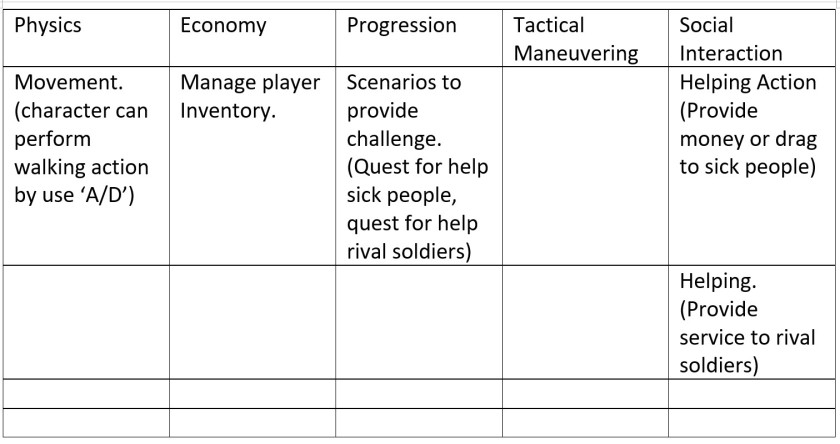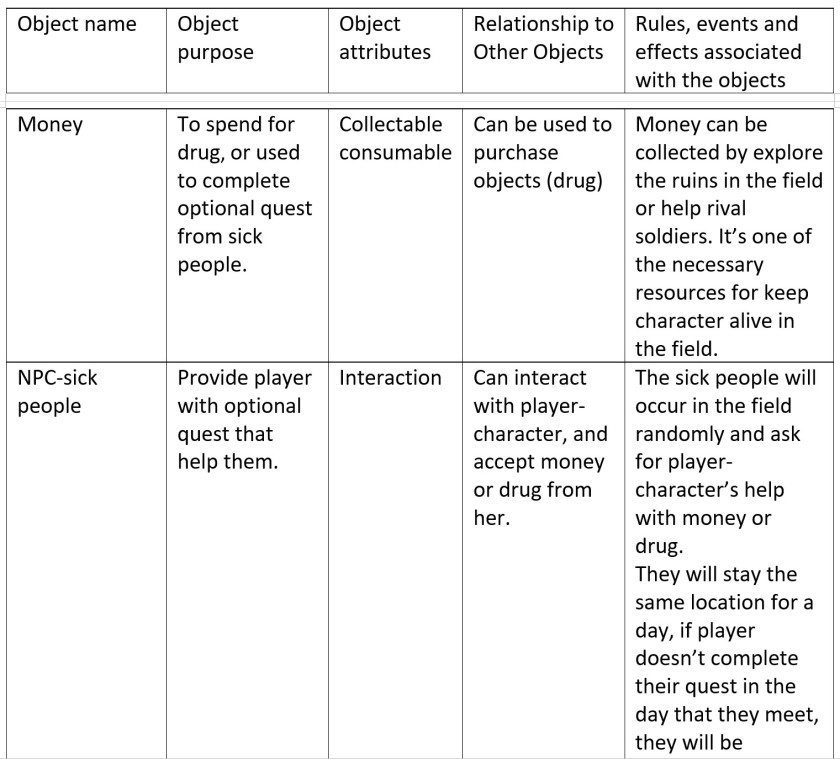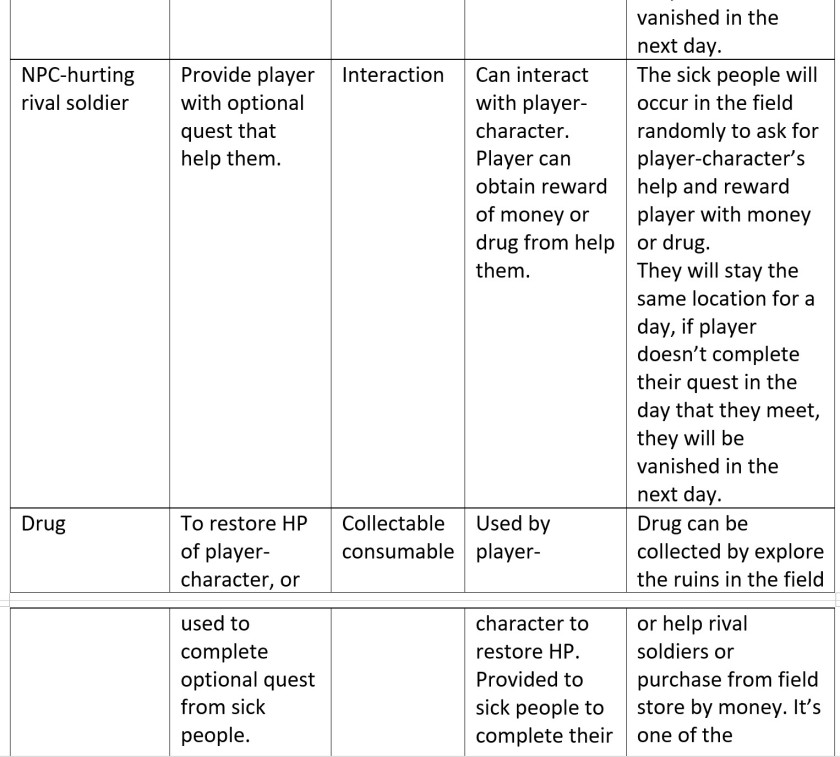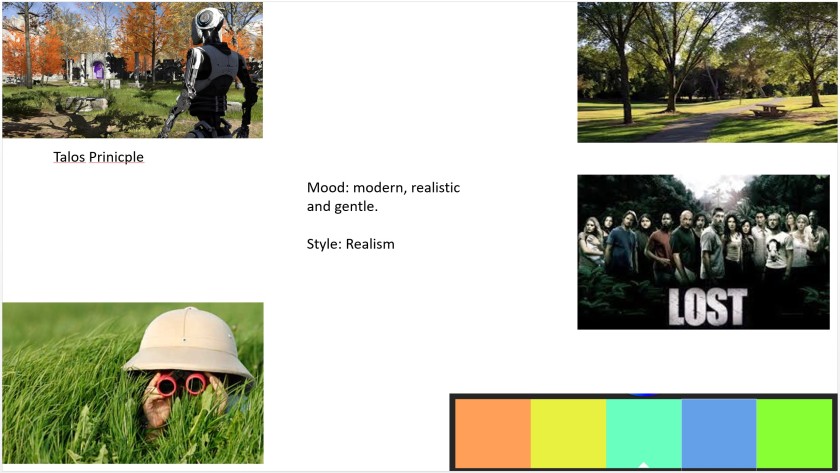Activity 5:
Choices:
(1) Control the rescue officer to search the surrounding area for clues.
(2) Control the tracker dog to search the surrounding area for clues.
(3) Switch between the two characters.
(4) Control current character to perform certain action.
(5) Collect tools.
Interface:
The interface of the game is simple as rough drawing below:
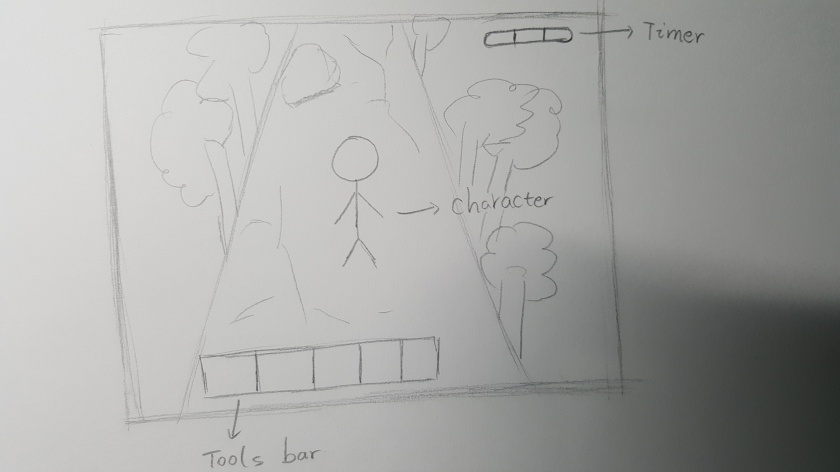
Timer: showing the time that left for player to discover the missing person.
Tools Bar: the tools that can be used to solve puzzles will be showed in the tools bar, mouse left click and drag for use.
Switch Character: press “E” on the keyboard.
Walk/Run (control character’s movement): W/S/A/D (keyboard)
Collect item/search/Interactive with objects: mouse (left click)
Menu: Press “Esc” on the keyboard to access game menu.
Action:
(1) The rescue officer can walk (normal speed) around the area, and collects items from higher places where the tracker dog’s sight cannot cover.
(2) The tracker dog can run (faster speed) around the area, and collects items from lower or smaller places where the rescue officer cannot fit in.
(3) From current character changes to the other character, sight and speed changed.
(4) The rescue officer: jump over barrier, open door, walks.
The tracker dog: run, sniff the scent of the missing person, go through hole and small space.
(5) Move indicating arrow toward the collectable items, left click on mouse, the items will be added to “Tools Bar”.
Rules:
The rescue officer and the tracker dog use different sights (High and Low).
The rescue officer and the tracker dog use different moving speeds (Walk and Run).
The interactive objects will be different from the unable to interactive objects (halo on the surface).
The rescue officer and the tracker dog can perform certain action to pass the barriers depend on the current character.
Timer runs out, game over.
Every tool in the Tools Bar can only use once and then disappear.
Feedback:
1. Simple controls, easy to learn.
2. The game requires to coordinates the use of skills of two playable characters to get through all the challenges on time, interesting and fun to play.
3. Game narrative is incomplete, there should be a story/reason for each missing person.
